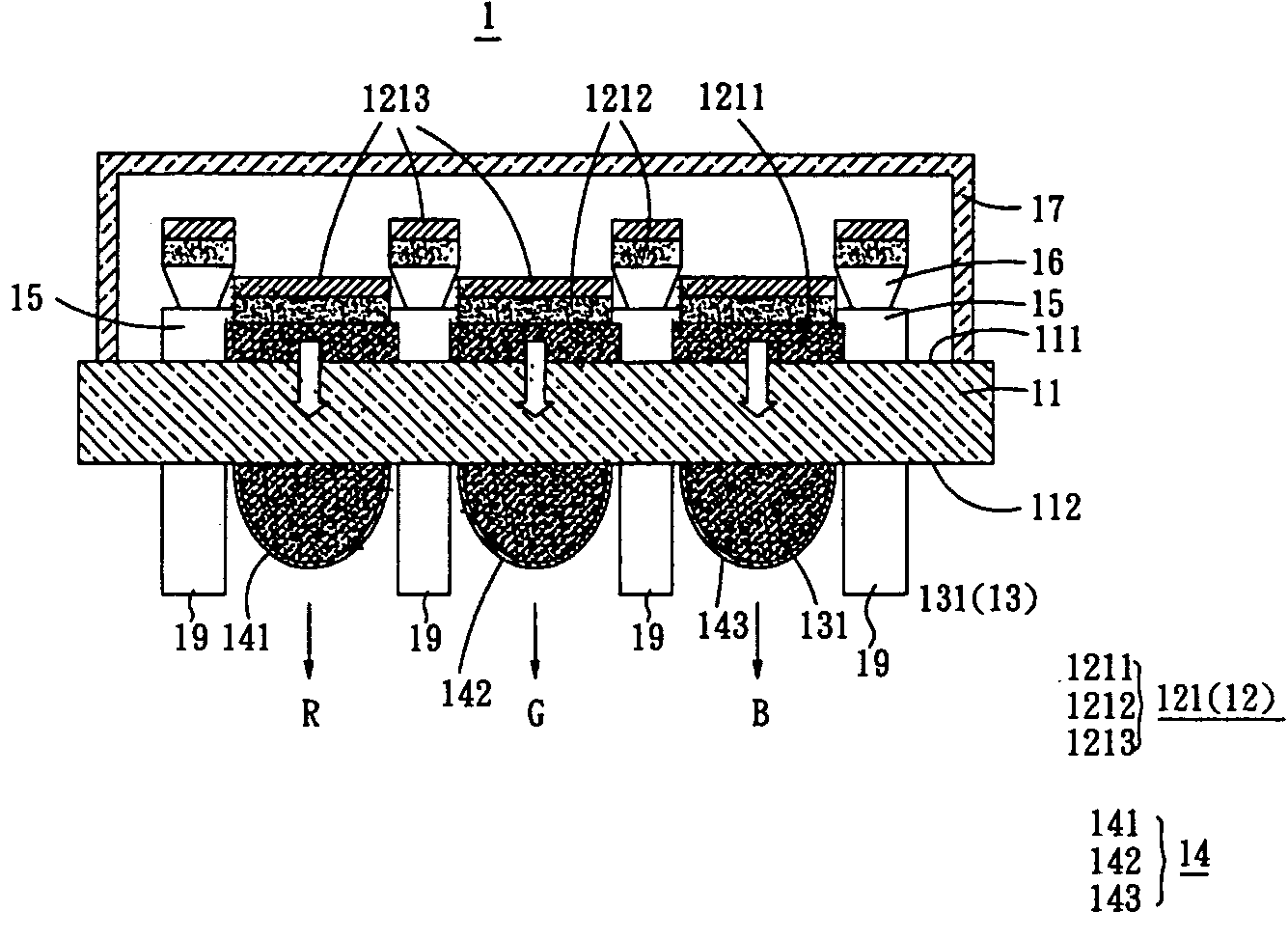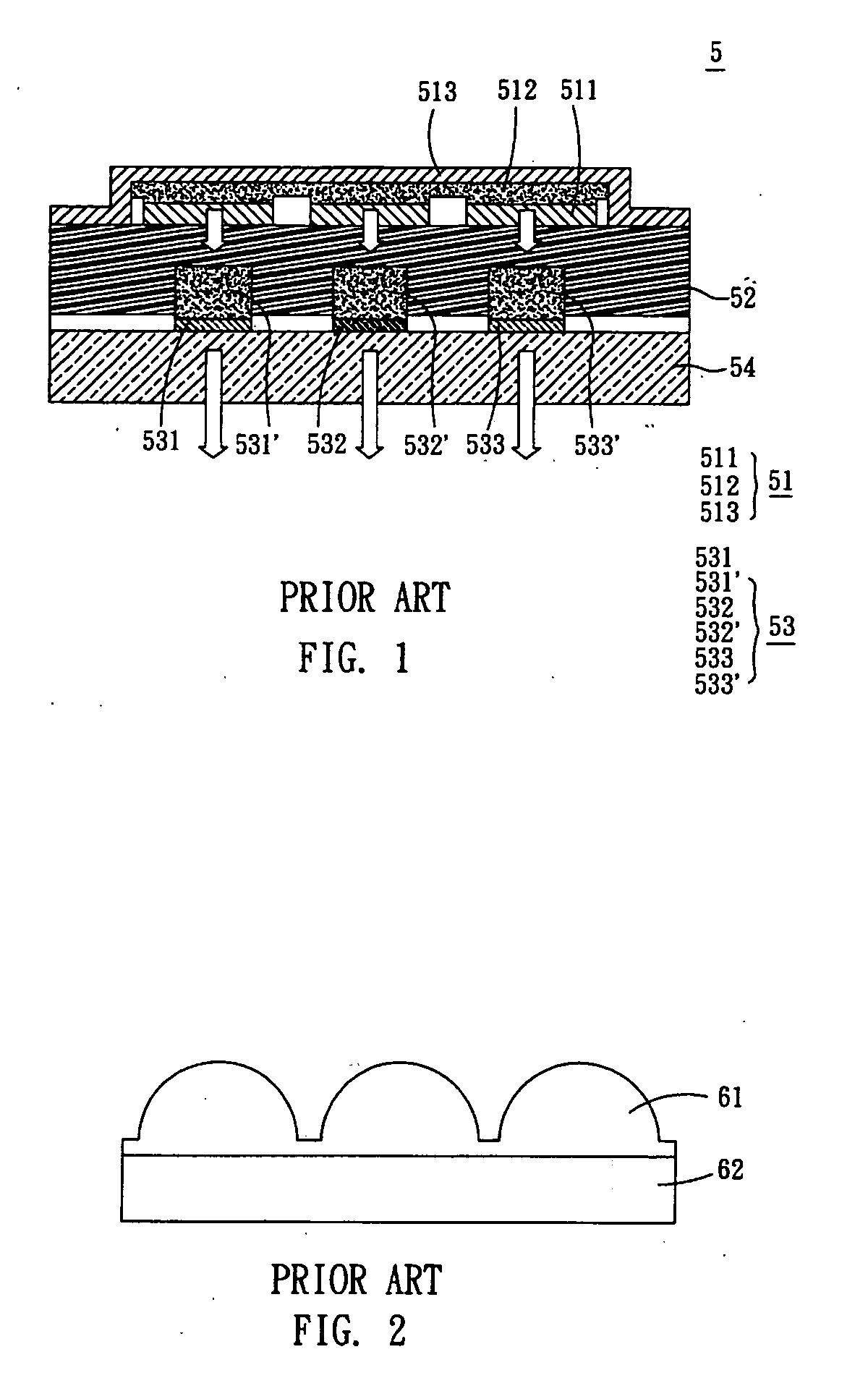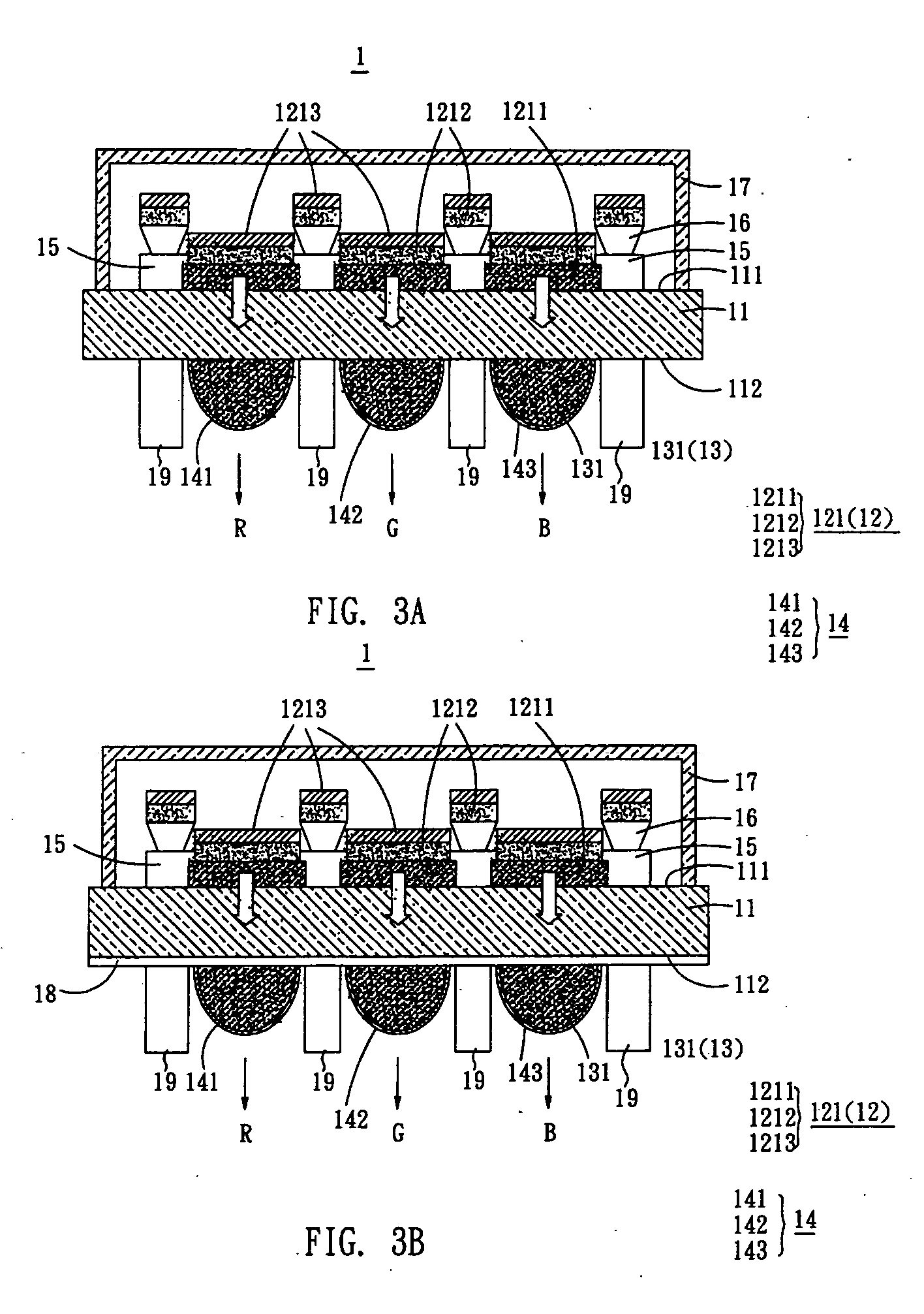Color tunable panel of organic electroluminscent display
a technology of organic electroluminescent display and color tunable panel, which is applied in the field of color tunable panel, can solve the problems of increasing the cost of the organic electroluminescent display panel, increasing the cost of the display panel, and affecting so as to improve the color purity of the white light emitted, the effect of increasing the color tunable panel, and broadening the application of the display on the various colors
- Summary
- Abstract
- Description
- Claims
- Application Information
AI Technical Summary
Benefits of technology
Problems solved by technology
Method used
Image
Examples
second embodiment
[0052] Second Embodiment
[0053] With reference to FIG. 5, the micro-lenses 131 are doped with a fluorescent material and / or a phosphorescent material. Wherein, the fluorescent material is red fluorescent powder, and the phosphorescent material is red phosphorescent powder. In the second embodiment, the white light emitted from the organic light-emitting area 12 passes through the micro-lenses 131 doped with the red fluorescent powder and / or red phosphorescent powder, so as to generate red light. Herein, the color tunable panel 1 is a red light display panel.
[0054] In this embodiment, the color tunable panel 1 may also comprise a plurality of filters 14. Herein, the filters 14 are red filters 141.
[0055] Of course, the fluorescent material can be green fluorescent powder, the phosphorescent material can be green phosphorescent powder, and the filters 14 can be green filters 142. Herein, the color tunable panel 1 is a green light display panel (not shown).
[0056] Of course, the fluore...
third embodiment
[0058] Third Embodiment
[0059] With reference to FIG. 6, the fluorescent material can be the mixture of red fluorescent powder, green fluorescent powder and blue fluorescent powder, and the phosphorescent material can be the mixture of red phosphorescent powder, green phosphorescent powder and blue phosphorescent powder.
[0060] In the embodiment, the white light emitted from the organic light-emitting area 12 passes through the micro-lenses 131 doped with the mixture of the red fluorescent powder, green fluorescent powder and blue fluorescent powder, and / or the mixture of the red phosphorescent powder, green phosphorescent powder and blue phosphorescent powder so as to generate broadband spectrum white light. Herein, the color tunable panel 1 is a white light display panel.
[0061] In this embodiment, the color tunable panel 1 may also comprise a plurality of filters 14. Herein, the filters 14 are red filters 141, green filters 142 and blue filters 143. The broadband spectrum white li...
fourth embodiment
[0063] Fourth Embodiment
[0064] With reference to FIG. 7, a color tunable panel of an organic electroluminescent display 2 according to the fourth embodiment of the invention comprises a transparent substrate 21, an organic light-emitting area 22 and a micro-lens array 23. In the embodiment, the transparent substrate 21 has a first surface 211 and a second surface 212, which are opposite to one another. The organic light-emitting area 22 is disposed on the first surface 211 of the transparent substrate 21 and comprises a plurality of pixels 221 for emitting short-wavelength light. The micro-lens array 23 is disposed on the second surface 212 of the transparent substrate 21 and comprises a plurality of micro-lenses 231, which are doped with a fluorescent material and / or a phosphorescent material and are disposed corresponding to the pixels 221, respectively. Herein, the short-wavelength light emitted from the pixels 221 of the organic light-emitting area 22 is ultraviolet light or blu...
PUM
 Login to View More
Login to View More Abstract
Description
Claims
Application Information
 Login to View More
Login to View More - R&D
- Intellectual Property
- Life Sciences
- Materials
- Tech Scout
- Unparalleled Data Quality
- Higher Quality Content
- 60% Fewer Hallucinations
Browse by: Latest US Patents, China's latest patents, Technical Efficacy Thesaurus, Application Domain, Technology Topic, Popular Technical Reports.
© 2025 PatSnap. All rights reserved.Legal|Privacy policy|Modern Slavery Act Transparency Statement|Sitemap|About US| Contact US: help@patsnap.com



